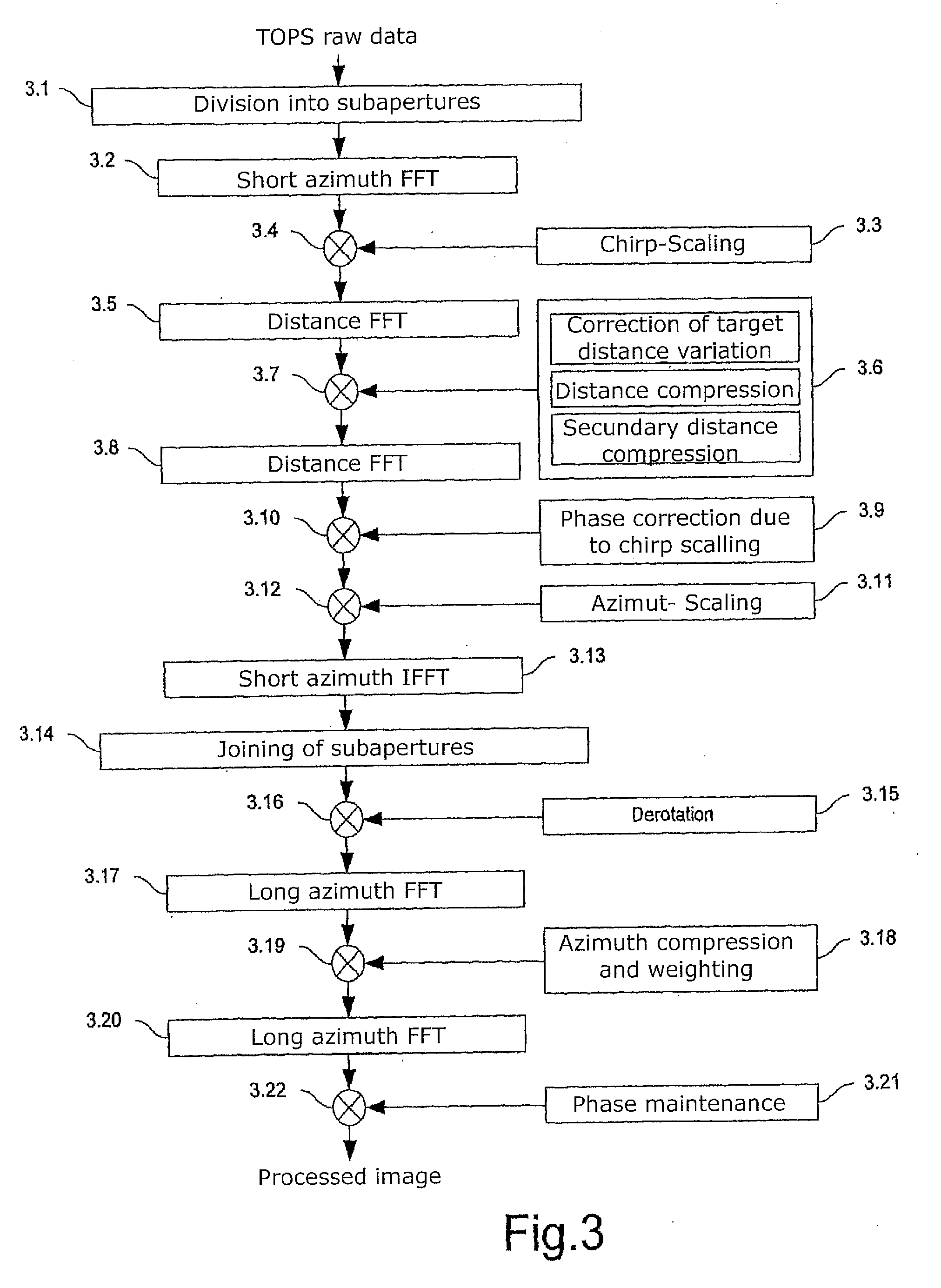Method for processing TOPS (Terrain Observation by Progressive Scan)-SAR (Synthetic Aperture Radar)-Raw Data
a technology of synthetic aperture radar and tops, applied in the field of tops observation by progressive scan, can solve the problems of inefficiency and imprecision, increase computational expenditure, inefficiency and imprecision of specan method improved by azimuth scaling, etc., and achieve the effect of high precision and very efficien
- Summary
- Abstract
- Description
- Claims
- Application Information
AI Technical Summary
Benefits of technology
Problems solved by technology
Method used
Image
Examples
Embodiment Construction
[0050]FIG. 3 is a schematic flowchart showing the individual procedural steps according to a preferred embodiment of the present invention. In the equations related to FIG. 3, t denotes the time vector in the azimuth direction (i.e. the “slow” time), τ denotes the time in the distance direction also referred to as the range direction (i.e. the echo propagation time), fa denotes the azimuth frequency vector (i.e. the Doppler frequency), fr denotes the range frequency, r0 denotes the distance to a point target, r denotes the range vector, λ denotes the wavelength, c denotes the light velocity and v denotes the speed on the ground.
[0051]In step 3.1, the TOPS raw data are first subdivided into subapertures. This subdivision is similar to the one performed in the spotlight processing according to the already mentioned patent specification EP 0 924 534 B1. During the processing, the azimuth bandwidth Ba of a point target, which depends on the antenna beam width, has to be sufficiently sca...
PUM
 Login to View More
Login to View More Abstract
Description
Claims
Application Information
 Login to View More
Login to View More - R&D
- Intellectual Property
- Life Sciences
- Materials
- Tech Scout
- Unparalleled Data Quality
- Higher Quality Content
- 60% Fewer Hallucinations
Browse by: Latest US Patents, China's latest patents, Technical Efficacy Thesaurus, Application Domain, Technology Topic, Popular Technical Reports.
© 2025 PatSnap. All rights reserved.Legal|Privacy policy|Modern Slavery Act Transparency Statement|Sitemap|About US| Contact US: help@patsnap.com



